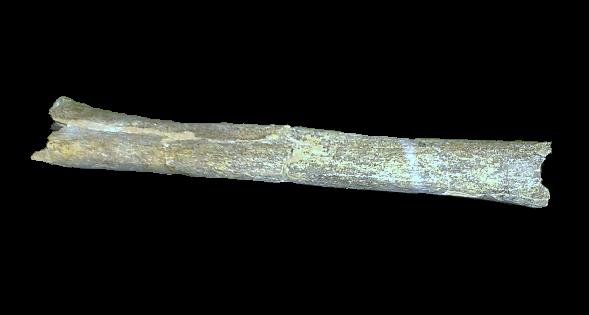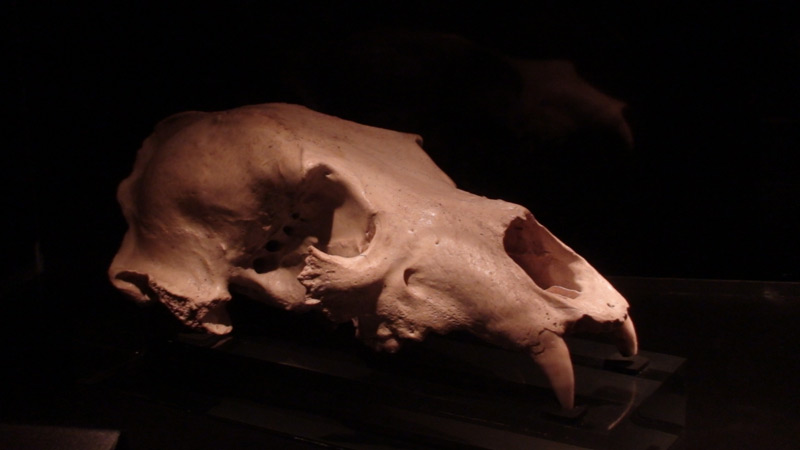|
Boxgrove Palaeolithic Site
The Boxgrove Palaeolithic site is an internationally important archaeological site north-east of Boxgrove in West Sussex with findings that date to the Lower Palaeolithic. The oldest human remains in Britain have been discovered on the site, fossils of ''Homo heidelbergensis'' dating to 500,000 years ago. Boxgrove is also one of the oldest sites in Europe with direct evidence of hunting and butchering by early humans. Only part of the site is protected through designation, one area being a geological Site of Special Scientific Interest, as well as a Geological Conservation Review site. Other key Palaeolithic sites in the UK include Swanscombe, Pontnewydd, Kents Cavern, Paviland, and Gough's Cave. The site is close to a fossil shoreline that has interglacial mammal fauna in intertidal sediments. The site was discovered by Andrew Woodcock and Roy Shephard-Thorn in 1974. They recorded the geological sequence, in-situ artefacts and fossil mammal remains. Parts of the site complex ... [...More Info...] [...Related Items...] OR: [Wikipedia] [Google] [Baidu] |
Archaeology
Archaeology or archeology is the study of human activity through the recovery and analysis of material culture. The archaeological record consists of Artifact (archaeology), artifacts, architecture, biofact (archaeology), biofacts or ecofacts, archaeological site, sites, and cultural landscapes. Archaeology can be considered both a social science and a branch of the humanities. It is usually considered an independent academic discipline, but may also be classified as part of anthropology (in North America – the four-field approach), history or geography. The discipline involves Survey (archaeology), surveying, Archaeological excavation, excavation, and eventually Post excavation, analysis of data collected, to learn more about the past. In broad scope, archaeology relies on cross-disciplinary research. Archaeologists study human prehistory and history, from the development of the first stone tools at Lomekwi in East Africa 3.3 million years ago up until recent decades. A ... [...More Info...] [...Related Items...] OR: [Wikipedia] [Google] [Baidu] |
Hominidae
The Hominidae (), whose members are known as the great apes or hominids (), are a taxonomic Family (biology), family of primates that includes eight Neontology#Extant taxa versus extinct taxa, extant species in four Genus, genera: ''Orangutan, Pongo'' (the Bornean orangutan, Bornean, Sumatran orangutan, Sumatran and Tapanuli orangutan); ''Gorilla'' (the Eastern gorilla, eastern and western gorilla); ''Pan (genus), Pan'' (the chimpanzee and the bonobo); and ''Homo'', of which only Human, modern humans (''Homo sapiens'') remain. Numerous revisions in classifying the great apes have caused the use of the term ''hominid'' to change over time. The original meaning of "hominid" referred only to humans (''Homo'') and their closest extinct relatives. However, by the 1990s humans and other apes were considered to be "hominids". The earlier restrictive meaning has now been largely assumed by the term ''Hominini, hominin'', which comprises all members of the human clade after the split ... [...More Info...] [...Related Items...] OR: [Wikipedia] [Google] [Baidu] |
Praemegaceros
''Praemegaceros'' is an extinct genus of deer, known from the Pleistocene and Holocene of Western Eurasia. ''Praemegaceros'' is considered to be a genus of "giant deer", with many species having an estimated body mass of around , considerably larger than most living deer. The genus contains the subgenera ''Praemegaceros,'' ''Orthogonoceros'' and ''Nesoleipoceros''. It has sometimes been synonymised with '' Megaloceros'' and '' Megaceroides'', but is regarded as a distinct genus by most studies. Some authors have considered the genus closely related to ''Megaloceros'', but this has been disputed by others. The earliest species like ''P. obscurus'' and ''P. verticornis'' appeared in Europe between 2 and 1.5 million years ago. The genus was widely distributed across Europe, West and Central Asia during the Early-Middle Pleistocene, with fossils having been discovered in France, Georgia, Germany, England, Greece, Israel, Italy, Romania, Russia Spain, Syria, and Tajikistan. The genus ... [...More Info...] [...Related Items...] OR: [Wikipedia] [Google] [Baidu] |
Hippopotamus (genus)
''Hippopotamus'', meaning "river horse" in Ancient Greek, is a genus of artiodactyl mammals consisting of one extant species, ''Hippopotamus amphibius'', the river hippopotamus (or simply the hippopotamus), and several extinct species from both recent and prehistoric times. It belongs to the family Hippopotamidae, which also includes the pygmy hippopotamus (''Choeropsis liberiensis'') and a number of extinct genera. Species The species of the genus ''Hippopotamus'' include: Extant species * ''Hippopotamus amphibius'', hippopotamus Extinct species *extinction, †''Hippopotamus aethiopicus'' (Africa, Early Pleistocene) * †''Hippopotamus antiquus'', (Europe, Early-Middle Pleistocene) considerably larger than living hippopotamuses *†''Hippopotamus behemoth'' (West Asia, Early Pleistocene) *†''Hippopotamus creutzburgi'', Cretan dwarf hippopotamus (Early Pleistocene) *†''Hippopotamus gorgops'' (Africa, West Asia, Early Pleistocene-early Middle Pleistocene) considerably lar ... [...More Info...] [...Related Items...] OR: [Wikipedia] [Google] [Baidu] |
Ursus Deningeri
''Ursus deningeri'' (Deninger's bear) is an extinct species of bear, endemic to Eurasia during the Pleistocene for approximately 1.7 million years, from . The range of this bear has been found to encompass both Europe and Asia, demonstrating the ability of the species to adapt to many Pleistocene environments. ''U. deningeri'' is the ancestor of the later cave bear (''Ursus spelaeus'') Morphology ''Ursus deningeri'' has a combination of primitive and derived characters that distinguishes it from all other Pleistocene bears. Its mandible is slender like that of living brown bears and ''Ursus etruscus''. It also has derived characters of cave bears (''Ursus spelaeus'') and is considered to be the descendant of ''Ursus savini'' and very close to the common ancestor of brown bears. Fossil distribution Sites and specimen ages: *Nalaikha, Mongolia (~1.8 Mya to 800,000 years ago) *West Runton Freshwater Bed, Cromer Forest Bed, Cromer Forest Bed Formation, Norfolk, England (~800,000� ... [...More Info...] [...Related Items...] OR: [Wikipedia] [Google] [Baidu] |
British Isles
The British Isles are an archipelago in the Atlantic Ocean, North Atlantic Ocean off the north-western coast of continental Europe, consisting of the islands of Great Britain, Ireland, the Isle of Man, the Inner Hebrides, Inner and Outer Hebrides, Outer Hebrides, the Northern Isles (Orkney and Shetland), and over six thousand smaller islands. They have a total area of and a combined population of almost 72 million, and include two sovereign states, the Republic of Ireland (which covers roughly five-sixths of Ireland), and the United Kingdom, United Kingdom of Great Britain and Northern Ireland. The Channel Islands, off the north coast of France, are normally taken to be part of the British Isles, even though geographically they do not form part of the archipelago. Under the UK Interpretation Act 1978, the Channel Islands are clarified as forming part of the British Islands, not to be confused with the British Isles. The oldest rocks are 2.7 billion years old and are ... [...More Info...] [...Related Items...] OR: [Wikipedia] [Google] [Baidu] |
Wild Horse
The wild horse (''Equus ferus'') is a species of the genus Equus (genus), ''Equus'', which includes as subspecies the modern domestication of the horse, domesticated horse (''Equus ferus caballus'') as well as the Endangered species, endangered Przewalski's horse (''Equus ferus przewalskii'', sometimes treated as a separate species i.e. ''Equus przewalskii''). The European wild horse, also known as the tarpan, that went extinct in the late 19th or early 20th century has previously been treated as the nominate subspecies of wild horse, ''Equus ferus ferus'', but more recent studies have cast doubt on whether tarpans were truly wild or if they actually were feral horses or hybrids.Tadeusz Jezierski, Zbigniew Jaworski: ''Das Polnische Konik. Die Neue Brehm-Bücherei Bd. 658'', Westarp Wissenschaften, Hohenwarsleben 2008, Other subspecies of ''Equus ferus'' may have existed and could have been the stock from which domesticated horses are descended. Przewalski's horse had reached t ... [...More Info...] [...Related Items...] OR: [Wikipedia] [Google] [Baidu] |
Stephanorhinus
''Stephanorhinus'' is an extinct genus of two-horned rhinoceros native to Eurasia and North Africa that lived during the Late Pliocene to Late Pleistocene. Species of ''Stephanorhinus'' were the predominant and often only species of rhinoceros in much of temperate Eurasia, especially Europe, for most of the Pleistocene. The last two species of ''Stephanorhinus'' – Merck's rhinoceros (''S. kirchbergensis'') and the narrow-nosed rhinoceros (''S. hemitoechus'') – went extinct during the last glacial period. Etymology The first part of the name, ''Stephano-'', honours Stephen I, the first king of Hungary. (The genus name was coined by Kretzoi, a Hungarian.) The second part is from (Greek for "nose"), a typical suffix of rhinoceros genus names. Taxonomy The taxonomic history of ''Stephanorhinus'' is long and convoluted, as many species are known by numerous synonyms and different genera – typically ''Rhinoceros'' and '' Dicerorhinus'' – for the 19th and most of the ... [...More Info...] [...Related Items...] OR: [Wikipedia] [Google] [Baidu] |
Flint Tool
Stone tools have been used throughout human history but are most closely associated with prehistoric cultures and in particular those of the Stone Age. Stone tools may be made of either ground stone or knapped stone, the latter fashioned by a craftsman called a flintknapper. Stone has been used to make a wide variety of tools throughout history, including arrowheads, spearheads, hand axes, and querns. Knapped stone tools are nearly ubiquitous in pre-metal-using societies because they are easily manufactured, the tool stone raw material is usually plentiful, and they are easy to transport and sharpen. The study of stone tools is a cornerstone of prehistoric archaeology because they are essentially indestructible and therefore a ubiquitous component of the archaeological record. Ethnoarchaeology is used to further the understanding and cultural implications of stone tool use and manufacture. Knapped stone tools are made from cryptocrystalline materials such as chert, flint, ... [...More Info...] [...Related Items...] OR: [Wikipedia] [Google] [Baidu] |
Acheulean
Acheulean (; also Acheulian and Mode II), from the French after the type site of Saint-Acheul, is an archaeological industry of stone tool manufacture characterized by the distinctive oval and pear-shaped "hand axes" associated with ''Homo erectus'' and derived species such as ''Homo heidelbergensis''. Acheulean tools were produced during the Lower Palaeolithic era across Africa and much of West Asia, South Asia, East Asia and Europe, and are typically found with ''Homo erectus'' remains. It is thought that Acheulean technologies first developed about 2 million years ago, derived from the more primitive Oldowan technology associated with ''Homo habilis''. The Acheulean includes at least the early part of the Middle Paleolithic. Its end is not well defined; if Sangoan (also known as Epi-Acheulean) is included, it may be taken to last until as late as 130,000 years ago. In Europe and Western Asia, early Neanderthals adopted Acheulean technology, transitioning to Mouste ... [...More Info...] [...Related Items...] OR: [Wikipedia] [Google] [Baidu] |
Boxgrove Flints
Boxgrove is a village, ecclesiastical parish and civil parish in the Chichester District of the English county of West Sussex, about north east of the city of Chichester. The village is just south of the A285 road which follows the line of the Roman road Stane Street. The Anglican parish has an area of . According to the 2001 census it had a population of 901 people living in 423 households of whom 397 were economically active. The 2011 Census indicated at population of 957. Included in the parish are the hamlets of Crockerhill, Strettington and Halnaker. Governance An electoral ward in the same name exists. This ward stretches northwest to West Dean with a total population taken at the 2011 census of 2,235. History Archaeology Boxgrove is best known for the Lower Palaeolithic archaeological site discovered in a gravel quarry known as Amey's Eartham Pit located near the village but in Eartham Parish. Parts of the site complex were excavated between 1983 and 1996 by a te ... [...More Info...] [...Related Items...] OR: [Wikipedia] [Google] [Baidu] |






